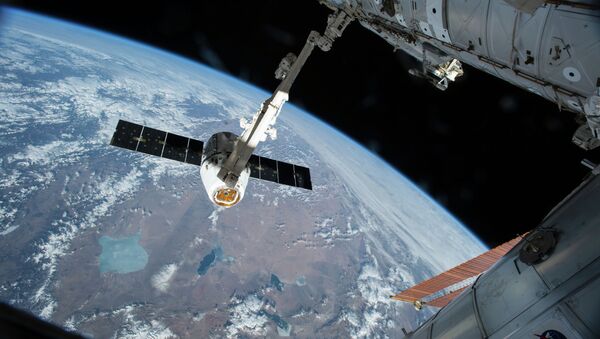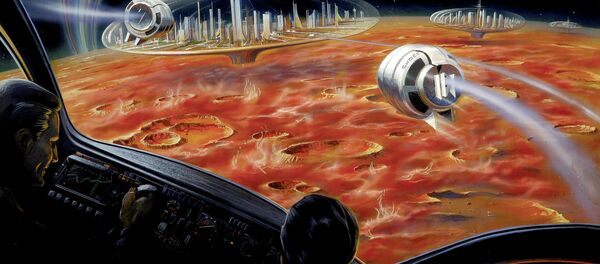A highly capable robotic arm is the principle mechanism to be used on such a new space base, and DARPA’s got it well in hand, according to former NASA astronaut Pam Melroy, now deputy director of DARPA's Tactical Technology Office.
“We think that these capabilities — space capabilities — are not just about a single monolithic satellite with a few capabilities, but instead about a vibrant, robust ecosystem that involves transportation, repair, refueling, upgrading, [and] in situ construction,” Melroy said Thursday at DARPA’s “Wait, What? A Future Technology Forum” in St. Louis, Space.com reported.
“Look at the great seafaring port cities in the world for inspiration, and imagine a port of call at 36,000 kilometers,” she added.
Low-Earth orbit, where most satellites and the International Space Station fly, situated between 186 and 373 miles (300 to 600 km) above Earth, is far less preferable than GEO for building a transformative transportation hub, Melroy noted. Here’s why:
— Lower velocity means reduced risk of collisions, especially with space junk;
— Much more stable orbit, as atmospheric drag is almost non-present;
— Objects stay in GEO, while they tend to fall from low-Earth orbit within about 25 years.
But no need for humanoid robots complete with arms and legs to live on the base and keep it functioning – just a piece of a robot is sufficient. A strong one.
The Pentagon wants to use “robotic arms very much like the one that was used to build the International Space Station, but with greater levels of automation and safety. DARPA is building just such a robotic arm,” Melroy was quoted as saying by Space.com.
“We think this is a critical capability to building a transportation hub that allows transportation to and from the Earth's surface, from low-Earth orbit to GEO, and even beyond Earth orbit,” Melroy said.
While the Pentagon is hard at work building robotic arms, the question of what, exactly, they intend to install on the station and transfer through it remains unknown.




